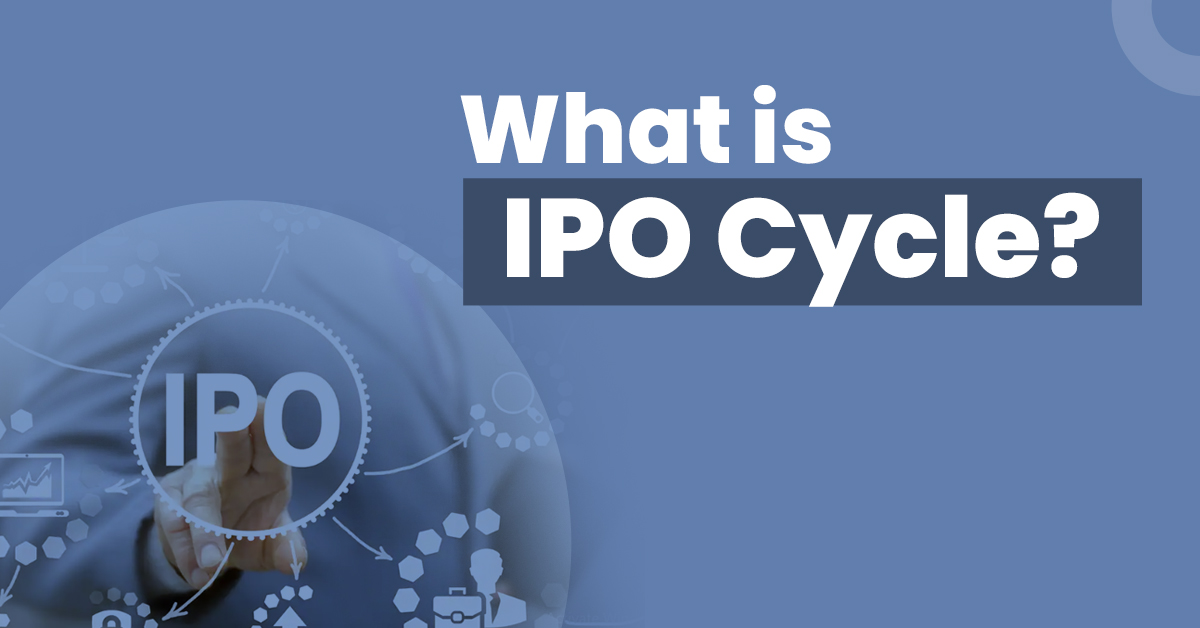Investing in the stock market is an exciting journey that provides ample opportunities for wealth creation. Among the most intriguing facets of the stock market is the IPO cycle, a process that allows investors to participate in the transition of a company from private to public ownership. The IPO (Initial Public Offering) cycle, which maps the stages of primary market investments, is essential for understanding how companies raise capital and how investors can benefit from this process.
Adding layers of sophistication to this investment strategy involves incorporating technical analysis, which can provide predictive insight into market behaviour during the IPO cycle. In this article, we will explore the IPO cycle, break down its stages, and examine how technical analysis plays a crucial role in evaluating primary market investments.
Understanding the IPO Cycle
The IPO cycle refers to the series of steps that a company undergoes to list its shares on a public stock exchange. For investors, this cycle offers a way to invest in companies during their formative growth stage—often when the potential for returns can be high. It’s important to note that participating in IPO investments involves risks, but for informed investors, it could be a strategic portfolio addition.
Broadly speaking, the IPO cycle consists of five stages: pre-IPO preparations, regulatory approvals, the roadshow, the IPO launch, and post-listing performance. Each stage contributes significantly to the success of the IPO, influencing both the issuing company and the investors who choose to participate.
Stages of the IPO Cycle
1. Pre-IPO Preparations
The IPO cycle begins with pre-IPO preparations. In this stage, the company identifies its need for raising capital through public markets and begins laying the groundwork for the IPO. This could involve hiring investment bankers, legal advisors, and financial experts to craft a comprehensive plan.
Key steps in pre-IPO preparations include:
- Valuation: The company assesses its worth to determine the pricing of shares. This is often done through financial metrics like revenue, profits, and growth potential.
- Structuring Financial Statements: Transparent financial reporting is essential for gaining investor trust.
- Selecting Investment Bankers (Underwriters): Underwriters play a critical role in guiding the company through the IPO cycle while pitching its offering to investors in the primary market.
During this stage, technical analysis may not be as applicable since the shares of the company have yet to trade publicly. However, historical data from the company and sentiment analyses—like investor interest in similar industries—can start shaping strategic decisions.
2. Regulatory Approvals
Once pre-IPO groundwork is complete, the company moves into the regulatory approval stage. Here, the company files its Draft Red Herring Prospectus (DRHP) with securities regulators such as the SEC (Securities and Exchange Commission) in the U.S. or SEBI (Securities and Exchange Board of India).
The DRHP contains details about the business model, financials, risks, and share price range. During this phase, regulators assess whether the company complies with all legal, financial, and governance requirements.
For investors, this is a critical moment in the IPO cycle. By studying the DRHP and analysing industry-wide trends, investors can gauge whether the IPO aligns with their financial goals and risk appetite. While technical analysis is limited at this stage, qualitative metrics like sector health and macroeconomic conditions play a significant role.
3. The Roadshow
The roadshow is perhaps the most dynamic phase of the IPO cycle. This is where the company and its underwriters meet with institutional investors, mutual funds, and hedge funds to pitch the offering. The goal is to generate interest in the IPO and secure commitments to purchase shares.
During the roadshow, the company fine-tunes its share price and finalises its offering range based on investor feedback. Decisions made at this stage can significantly impact the demand for the IPO once it launches.
For those familiar with technical analysis, scrutinising market sentiment (gauged by demand from institutional buyers) can provide valuable insights. Additionally, tracking pre-IPO market hype might offer an early indication of price trends once trading begins.
4. IPO Launch
The day of the IPO launch typically garners widespread market attention, as the company’s shares are officially listed on the stock exchange. This marks the moment investors can buy and sell these stocks freely in the secondary market.
During the IPO launch, demand often sets the stock’s opening price, resulting in price volatility. As shares begin trading, technical analysis becomes an invaluable tool for assessing patterns such as price movements, trading volume, and support/resistance levels. Many new investors flock to IPOs with the expectation of instant profits, but seasoned investors use technical analysis to decide when to buy, hold, or sell based on trends.
For example:
- Candlestick charts: These visuals help track price patterns immediately post-IPO.
- Moving averages: Short- and long-term averages can provide a clearer picture of post-IPO price trends and momentum.
5. Post-Listing Performance
After the IPO launch, the post-listing phase begins. This is when the company’s stock starts stabilising as retail and institutional investors adjust their positions based on performance. Key factors such as quarterly earnings, management announcements, or broader industry trends can impact the stock’s trajectory.
For investors who missed the initial offering, this stage provides an opportunity to invest in the company after its stock has settled. This is where technical analysis takes centre stage—it helps evaluate the stock’s long-term potential based on historical charts, trading volumes, and other momentum indicators.
Post-IPO, investors may use technical analysis tools to:
- Identify breakout patterns or price reversals.
- Gauge institutional participation based on high-volume trades.
- Forecast potential price levels using Fibonacci retracements or Bollinger Bands.
Using Technical Analysis to Navigate the IPO Cycle
Although technical analysis plays a significant role during post-launch trading, integrating it throughout the IPO cycle provides an extra layer of financial wisdom. While qualitative analysis focuses on financial metrics and regulatory compliance in the primary market, technical analysis empowers investors to systematically analyse behavioural patterns in the secondary market.
Some technical analysis techniques include:
- Relative Strength Index (RSI): Determines whether the stock is overbought or oversold soon after listing.
- Chart Patterns: Spotting trends such as head-and-shoulders or flags can offer entry and exit points for IPO stocks.
- Volatility Indicators: Tools like the Average True Range (ATR) help assess price fluctuations, especially during the frenzied post-IPO period.
Conclusion
The IPO cycle is a multi-stage process that allows businesses to raise capital while offering investors the chance to invest in promising companies during their initial growth phase. From pre-IPO preparation to post-listing performance, each stage plays a crucial role in determining the outcome of the IPO.
For investors, understanding these stages combined with technical analysis can enhance decision-making and optimise portfolio performance. Whether you’re an institutional player or a retail investor, grasping stock price behaviour during the IPO cycle not only prepares you for market volatility but also helps you unlock potential opportunities in the primary market.


